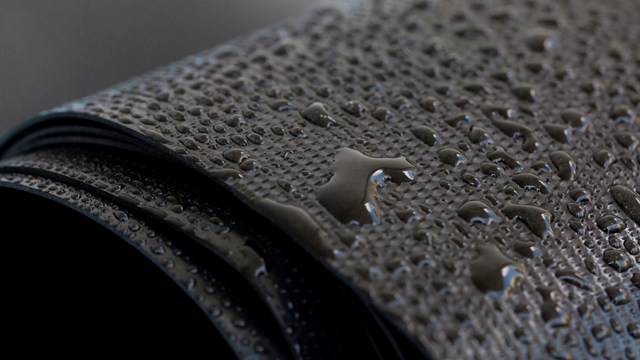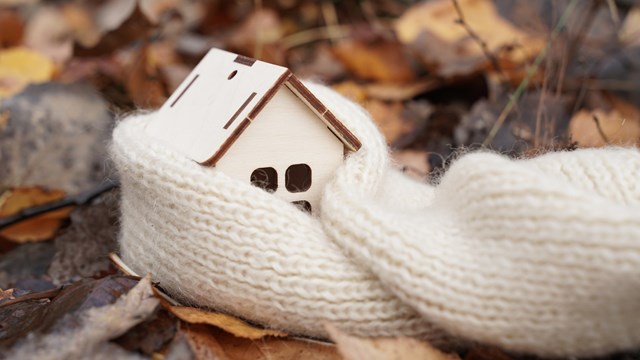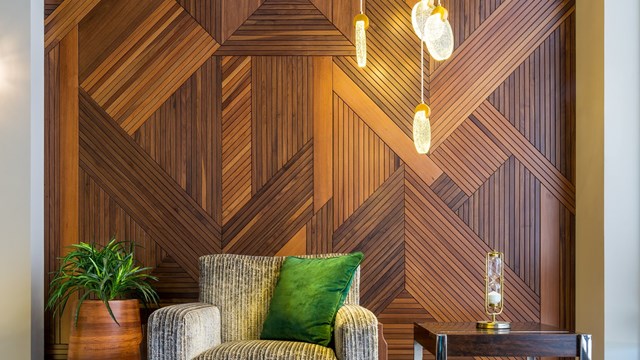
Whether indoors or out, few design elements are as dramatic and arresting as a waterfall, water wall, Koi pond, reflecting pool or statuesque fountain. These water features add beauty and value to any New Jersey property or building, whether they are inside a lobby or common area or outside a gathering area or main entrance.
“A water feature is basically a signature piece or focal point for the building,” says Dan Euser, a landscape architect with Dan Euser Waterarchitecture Inc., in Richmond Hill, Ontario, whose firm does projects nationwide and creates reflecting pools, architectural waterfalls, art installations, rain curtains, classical fountains, animated fountains, fog and steam fountains, ice and winter fountains, children’s water play areas, swimming pools, multi-function water feature areas and more. He is well known for his human-made waterfall, installed as part of the National September 11 Memorial at the former site of the World Trade Center in New York.
“Some water features are an interactive type of water play, while others are just for the pleasant sound or reflective qualities or even to masque the public sounds,” says Euser. “There are so many different ways it’s done or used.”
What’s Available
Water features can be inside or outside and include anything from a simple brick-paved garden pond to an extensive man-made filtered pond complete with fish, waterfalls, flowers and plants. According to PondWorks, an aquatic design, construction and maintenance company that offers services in six states nationally from New York to Maryland, garden ponds are perhaps the most common type of water feature one can have. Both formal and naturalistic, they come in nearly every size, shape and style and are found in both residential and commercial settings.
Garden ponds are water features that usually contain plants and fish and can be lush living habitats for many species. These features accentuate and enhance the environment and are often a focal point of any design. Garden ponds are balanced, healthy aquatic ecosystems. Filtration systems for these water features use both biological and mechanical means but are generally smaller, less complex and less costly than that of a comparable size koi pond, according to PondWorks.
Koi ponds, says PondWorks, are water features designed around fish, and they can be either formal or informal. Pond volume and dimensions are key to achieving the best results. Koi ponds and the filtration systems that support them are designed to manage a given fish capacity and keep them healthy and thriving. Through proper design, filtration collects and neutralizes fish waste and controls outside environmental effects on the pond.
Creative Choices
When you think of a water feature, you probably think of a standard three-tier fountain, a common item on many Garden State area properties, but today there are more water features to choose from.
The most popular features tend to be waterfalls, circulating water like water walls and fountains. Floating fountains have become very popular and are less expensive than say, a customized waterfall. Adding a fountain and aerator to an HOA’s pond or lake not only looks pretty but serves an environmental purpose, by improving water circulation and increasing dissolved oxygen levels in waterways. This limits the growth of algae and helps sustain fish and other aquatic animals. A designer will look at the size of the lake and determine the parameters of the fountain.
Sean So of Water Studio says that it’s not just about placing any water feature on a property for his Midwestern clients; it’s about the space it creates. “We work to create a tranquil space and enhance the space that’s there,” he says. “Also, the residents really love the water features.”
Euser says that designers are also getting more creative in their designs. “Now you see walls squirting, interfacing with video, so who knows?” he says. “Condos are not super high-end generally as far as water features are concerned, as opposed to museums or civic centers, but it does depend on how much space is available.”
HOAs can be creative when choosing and installing a water feature by utilizing unused space. “We worked with one client to create an exciting water feature. The building had old outdoor elevator shafts which weren’t being used, so we installed 40-foot water walls inside the elevator shafts and it aesthetically softened that part of the building,” says So, whose California-based company has designed hundreds of water projects nationwide. “It was quite dramatic.”
A combination fire and water feature—as a bowl, wall, stack of stones or fountain—is also growing in popularity, says So. “They are water fountains during the day and they turn into fire pits at night, where the residents can gather around.” According to the Water Studio website, small brass underwater light fixtures with low-voltage halogen or LED bulbs are used in most of their water features and the lamp wattage and beam angle depend on the type of water feature and the project’s design intent. Color lighting is also available.
When choosing a water feature, Euser says there are several aspects to think about. “You’re looking at mechanics, structure, finishes and waterproofing and they all have to marry together to make it work,” he says. “There’s an artistic element to it, but you also need to worry about structure. For example, if the building has a roof terrace and you want to put it a water feature up there, how do you make sure you’re not leaking to the floor below? An interior water feature can get very noisy, so you have to be careful on what kind of noise is acceptable.”
Experts agree that you have to consider visuals, sounds, noise, and the topography of the site when designing an interior or exterior water feature. Site requirements depend on what fountain or water feature is chosen. A water supply, drain and power source for the pump and any underwater lighting are typically required for the water features.
Although fun and interesting to look at, koi ponds are not typical water features for condo and co-op buildings, since it requires more maintenance and the fish need to be fed.
Designing a water feature that blends with the property should also depend on the building’s architectural style. For example, a traditional, three-tiered fountain of yesteryear would work well with a traditional building, while a black granite reflecting pool would look better on the property of a more contemporary building. It’s easier to install water features in a new building by working with an architect from the ground up.
Keeping It Running
Water features are quite exquisite to look at, but require some maintenance to prevent leaks, algae growth and insects. “It’s similar to having a pool, spa or anything with water,” says So. “It requires regular maintenance. If the association has someone who takes care of their pool, that person should take care of the water feature, too. Today’s systems are designed with filtration and sanitizing systems, chlorinators, sterilizers, ozonizers and more. That doesn’t mean that there aren’t going to be problems, especially leaks.”
“There's really not a way to prevent [leaks],” says Pieter van Westervelt, the manager of Premium Aquascapes in Bergenfield. “The best way [to avoid the issue] is to hire a contractor who's qualified to build a pond versus any person that says, 'Oh, yeah I could do that.”
So agrees that choosing the right company to install the water feature is also vital to preventing leaks and other problems. The building staff, So says, should be instructed to remove, on a daily and as-needed basis, any debris and dead plant matter. They should be trained to check the chemical balance of the water and inspect the feature regularly for leaks.
Bugs, leaves, algae growth and pump maintenance are the most common issues associated with water features. According to van Westervelt, issues such as algae growth are indicative of problems in the pond, put can be solved easily with a bit of extra maintenance.
“As far as algae,” van Westervelt explains, “if it's the string algae that looks like hair, here's not a proper balance of plants in the water. Aquascape Inc. came out with a product called an IonGen, that releases trace amounts of copper in the water and it kills off the algae.”
According to landscape designer Mark Napolitano of By Design Landscapes in Metuchen, koi ponds require a bit of extra attention and maintenance.
“Koi pond feeding fish requires the fountains walls to be wiped down and the surrounding area for splashes,” Napolitano says. “If coins have been thrown into the pond, you will need to remove them. [Ponds] should be recently and checked for damage monthly or bi-monthly. You will need to add water as evaporation occurs.”
Seasonal Maintenance
Seasonal maintenance of water features is also crucial. These need to be winterized to prevent damage to the structure and to the water pipes during colder months. Some water features also come with a heater that prevents the water from freezing and, ultimately, breaking the equipment.
“What we recommend is starting [winterizing] before the leaves actually start falling too hard by netting the pond,” van Westervelt says. “You want to try to keep the leaves from getting into the pond because if they decompose they contaminate the water, which isn't healthy for the fish either. For the wintertime you want to use a de-icer. We don't recommend running waterfalls in the winter. When we're ready to shut down, we disconnect the pump and drain any water out of the bio fall.”
All water features should be cleaned thoroughly and undergo a maintenance check before being put back into use when icy winter temperatures dissipate, van Westervelt advises.
“Whenever we do spring clean outs where we drain the pond and clean it all down – which you're supposed to do, it helps get rid of all the waste that builds up – we always check along the edges of the pond for leaks,” he says.
The board or management should work closely with a qualified landscape architect to choose a water feature and make sure that it makes the right statement and is installed properly. In some cases, the professional might even suggest forgoing the water feature for some other design feature. “We’ll say ‘no’ if they want something that’s too big for the space or it’s going to cause splashing issues,” says So, whose studio works with a variety of materials ranging from corrosion-resistant metals, such as stainless steel and copper, to a wide selection of stone and glass.
The cost of water features depends on the type, materials chosen, the complexity of the job and the customization. The more the projects are customized, the higher the prices. Some water features can start around a few thousand dollars and go up to $250,000, but they definitely make a statement.
“Water fits into any landscape and almost everyone is mesmerized by water, the sounds and look,” says one landscaper. “It’s a nice addition to any property and is a calming, comforting feeling.”
Lisa Iannucci is a freelance writer and a frequent contributor to The New Jersey Cooperator. Managing Editor Debra A. Estock and editorial assistant Enjolie Esteve contributed to this article.






Leave a Comment